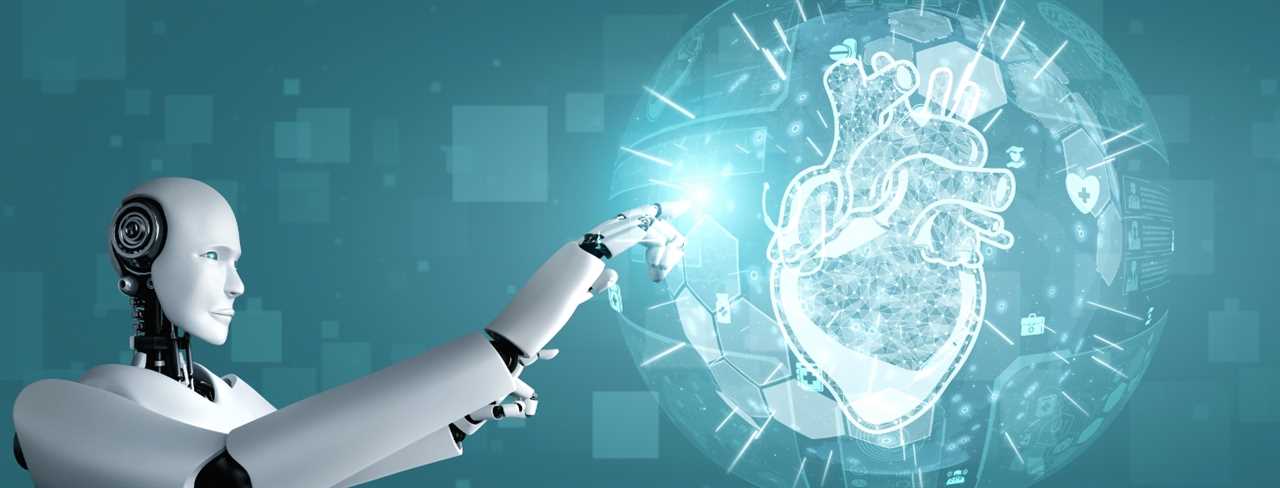
In the rapidly evolving field of AI and robotics, numerous groundbreaking innovations have emerged, transforming industries and redefining the concept of automation. This article explores the top 10 advancements in this domain, ranging from autonomous robots and machine vision to natural language processing and intelligent automation.
By delving into the technical and analytical aspects of these innovations, we aim to provide a comprehensive and insightful overview for professionals seeking to harness the potential of AI and robotics in their respective fields.
Autonomous Robots
One of the most significant advancements in the field of AI and robotics is the emergence of autonomous robots. These robots are capable of performing tasks and making decisions without human intervention.
Autonomous navigation is a key feature of these robots, allowing them to move and operate in dynamic and unstructured environments. Through the use of various sensors and algorithms, they can perceive their surroundings, plan their movements, and avoid obstacles.
Another important aspect of autonomous robots is robot learning, which enables them to acquire new skills and improve their performance over time. With the ability to learn from their experiences and adapt to changing circumstances, these robots have the potential to revolutionize industries and enhance human productivity.
As the technology continues to advance, the future of autonomous robots holds great promise for achieving greater efficiency and autonomy in various fields.
Machine Vision
Machine vision has greatly enhanced object recognition capabilities in AI and robotics. With advancements in image processing, machines are now able to accurately identify and classify objects in real-time.

This technology has opened up new possibilities for automation and efficiency in various industries, from manufacturing to healthcare.
Enhancing Object Recognition
In recent years, significant advancements have been made in enhancing object recognition through the application of AI and robotics.
Object detection, a fundamental aspect of machine vision, has witnessed remarkable progress thanks to the integration of machine learning techniques. Machine learning algorithms have revolutionized the field by enabling computers to learn from vast amounts of data and recognize objects with unprecedented accuracy.
These algorithms analyze and extract features from images or video streams, allowing machines to identify and classify objects in real-time. Convolutional neural networks (CNNs) have emerged as a popular approach in object recognition, achieving state-of-the-art performance in various tasks such as image classification and object detection.
Advancements in Image Processing
With the integration of AI and robotics, there have been significant advancements in image processing, particularly in the field of machine vision. This has led to the development of more sophisticated algorithms and techniques that enable machines to understand and interpret visual information.
Advancements in deep learning have played a crucial role in improving the accuracy and reliability of computer vision applications. Here are some key advancements in image processing:
- Object detection and recognition: Deep learning algorithms have revolutionized the way machines detect and recognize objects in images and videos.
- Image segmentation: Advanced algorithms now allow machines to accurately segment and extract objects from complex backgrounds.
- Image classification: Deep learning models have achieved remarkable results in classifying images into different categories with high accuracy.
- Image enhancement: Techniques such as denoising, deblurring, and super-resolution have been significantly improved, enabling clearer and more detailed images.
These advancements in image processing have opened up new possibilities for AI and robotics, empowering machines to perceive and understand the visual world more effectively.

Robot Control
Robot control is a crucial aspect of AI and robotics, enabling remote operation and seamless interaction with robots.
Remote robot control allows users to operate robots from a distance, making it possible to perform tasks in hazardous environments or inaccessible locations.
AI-powered robot commands enhance the autonomy and decision-making capabilities of robots, enabling them to adapt to changing situations.
Gesture-based robot control enables intuitive and natural interaction with robots, eliminating the need for complex programming or specialized knowledge.
These innovations in robot control are revolutionizing the way humans interact with robots, opening up new possibilities in various industries and applications.
Remote Robot Control
Through the utilization of advanced technology, humans are able to exert control over robots from a distance. This remote operation of robots, also known as telepresence control, has revolutionized various industries and opened up new possibilities for exploration and productivity.
In the realm of healthcare, remote robot control enables doctors to perform surgeries on patients located in different parts of the world, providing access to specialized care regardless of geographical barriers.
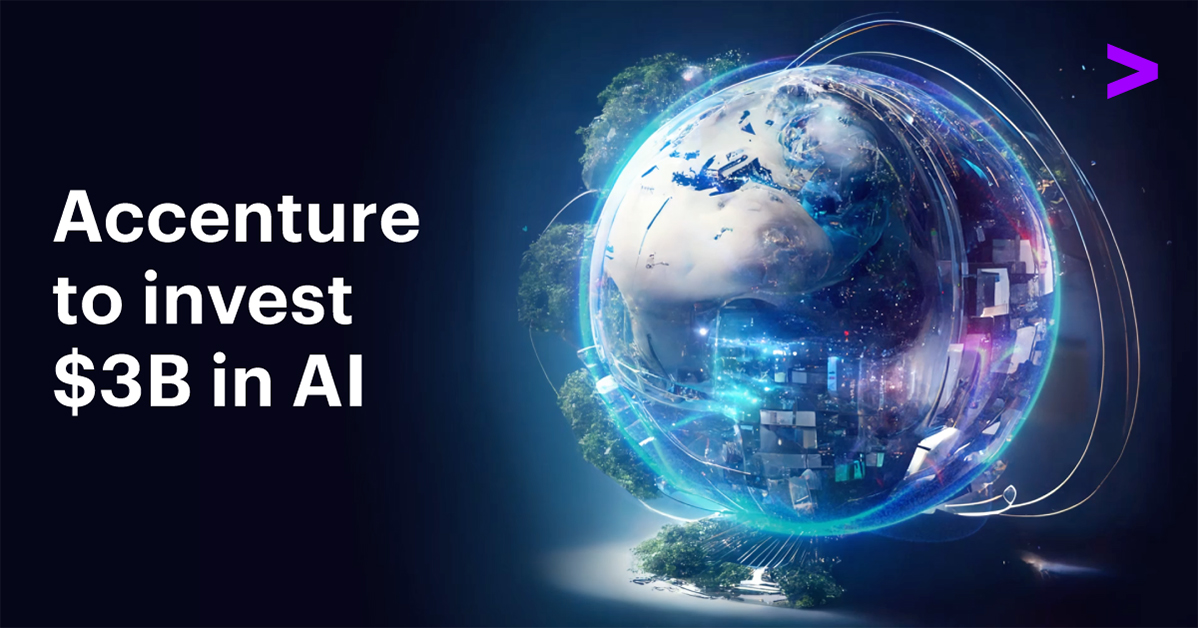
In the field of disaster response, robots controlled remotely can enter hazardous environments and perform rescue missions, protecting human lives and minimizing risks.
In manufacturing, remote robot control allows for increased efficiency and precision, as robots can be operated from a central location, reducing the need for physical presence on the factory floor.
Through remote robot control, humans can harness the power of technology to overcome physical limitations and achieve tasks that were once deemed impossible. This innovative advancement empowers individuals and enhances freedom in various aspects of life and work.
Ai-Powered Robot Commands
Utilizing AI-powered technology, robots are commanded with precision and efficiency, enhancing their capabilities and revolutionizing the field of robot control.
One of the key advancements in this area is the integration of AI-powered voice recognition systems. These systems enable robots to understand and respond to human commands, making human-robot interaction more natural and intuitive.
By leveraging AI algorithms, robots can learn and adapt to different commands and contexts, improving their ability to carry out complex tasks. These robot learning algorithms enable robots to continuously improve their performance over time, making them more efficient and effective in their tasks.
With the integration of AI-powered voice recognition and robot learning algorithms, the control of robots has become more seamless and user-friendly, empowering users to interact with robots more effortlessly and enabling robots to perform tasks with greater precision and autonomy.

Gesture-Based Robot Control
One notable advancement in the field of robot control is the implementation of gesture-based commands, allowing users to interact with robots through intuitive hand gestures. This technology, known as gesture recognition, enables users to control robots without the need for physical buttons or joysticks. Instead, users can simply use their hands to communicate with the robot, making the interaction more natural and intuitive.
Some key features and benefits of gesture-based robot control include:
- Increased ease of use: Users can easily control robots using familiar hand gestures, eliminating the need for complex instructions or training.
- Enhanced flexibility: Gesture-based control allows for more freedom of movement, enabling users to interact with robots from various angles and distances.
- Improved safety: Without the need for physical contact, gesture-based control reduces the risk of accidents or injuries during robot operation.
- Expanded applications: Gesture-based control opens up new possibilities for using robots in diverse industries such as healthcare, manufacturing, and entertainment.
Natural Language Processing
Within the realm of AI and robotics, Natural Language Processing (NLP) plays a critical role in enabling machines to understand and interpret human language.
NLP encompasses various techniques and algorithms that focus on natural language understanding and sentiment analysis.
Natural language understanding involves the comprehension of spoken or written language by machines, allowing them to extract meaning and context from text or speech. This capability enables machines to engage in conversations with humans, answer questions, and assist with tasks.
Sentiment analysis, on the other hand, involves the identification and classification of emotions, opinions, and attitudes expressed in text or speech. By analyzing sentiment, machines can gain valuable insights into public opinion, customer satisfaction, and even predict trends.
NLP has opened up new possibilities for AI and robotics, facilitating more natural and efficient human-machine interactions.

Human-Robot Interaction
Human-robot interaction is a crucial aspect of AI and robotics. It involves creating an emotional bond between humans and robots. This raises ethical concerns and the need for guidelines to ensure that the interaction is beneficial and respectful.
Improving communication and trust between humans and robots is also a key focus. It enhances the overall interaction and promotes effective collaboration.
Emotional Bond With Robots
Developing a profound emotional bond with robots has become a significant area of focus in the field of human-robot interaction. As robots become more integrated into our daily lives, researchers are exploring ways to enhance their emotional intelligence to facilitate deeper connections with humans. This has the potential to greatly impact our psychological well-being and the way we interact with technology.
Here are some key aspects of emotional bonding with robots:
- Emotional intelligence in robots: Advances in AI enable robots to perceive and respond to human emotions, creating a more empathetic interaction.
- Psychological impact of human-robot relationships: Studies show that humans can form emotional attachments to robots, leading to improved mental health and increased social interaction.
- Trust and companionship: Building trust and companionship with robots can provide individuals with a sense of security and companionship.
- Ethical considerations: The development of emotional bonds with robots raises important ethical questions regarding the boundaries of human-robot relationships and the potential for exploitation.
As technology continues to evolve, the potential for emotional bonding with robots opens up new possibilities for human-robot interaction and the way we perceive and relate to artificial beings.
Ethical Concerns and Guidelines
As the field of AI and robotics continues to advance, ethical concerns and guidelines surrounding human-robot interaction have become a crucial focus. With the increasing integration of robots into our daily lives, it is essential to address the ethical implications that arise from this interaction.
One major concern is the potential for robots to infringe upon human rights, privacy, and autonomy. For instance, there are concerns about the collection and use of personal data by robots, as well as the potential for robots to be used for surveillance or manipulation.
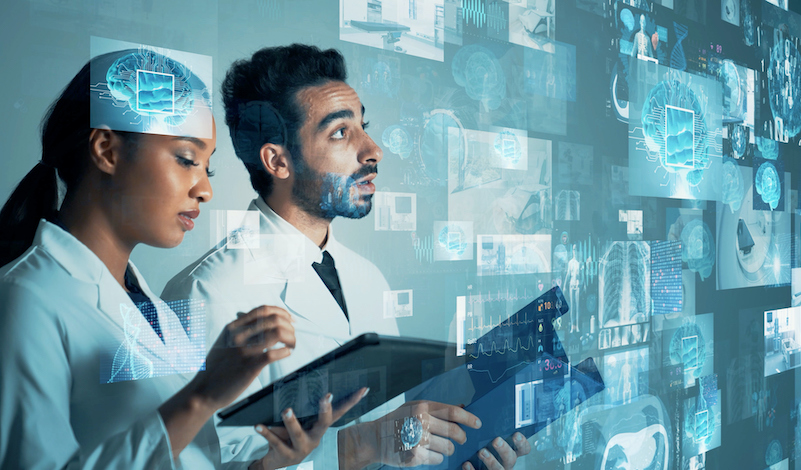
To address these concerns, ethical guidelines have been established to regulate the development and deployment of AI and robotic technologies. These guidelines aim to ensure transparency, accountability, and respect for human values and rights. They emphasize the need for informed consent, data protection, and the inclusion of ethical considerations in the design and implementation of robotic systems.
Improving Communication and Trust
To enhance human-robot interaction, a key focus is on improving communication and trust through the implementation of innovative strategies and technologies. This is crucial for building empathy and enhancing collaboration between humans and robots. Here are four key areas of improvement in this domain:
- Natural Language Processing: Advances in natural language processing enable robots to understand and respond to human speech more effectively, facilitating more meaningful and efficient communication.
- Gesture Recognition: By accurately interpreting human gestures and body language, robots can better understand human intentions and respond appropriately, leading to improved collaboration.
- Emotion Recognition: Developing robots with the ability to recognize and respond to human emotions allows for more empathetic interactions, fostering trust and enhancing communication.
- Trustworthiness Assurance: Implementing measures to ensure the safety and reliability of robots helps to build trust between humans and machines, enabling more effective collaboration.
Swarm Intelligence
Swarm Intelligence revolutionizes AI and robotics by harnessing the collective intelligence of decentralized systems. Inspired by swarm behavior observed in nature, this approach involves coordinating the actions of numerous entities to achieve complex tasks. By leveraging the power of collective intelligence, swarm systems can tackle problems that are beyond the capabilities of individual agents.
In swarm intelligence, individual agents, such as robots or AI algorithms, communicate and interact with each other locally, without the need for centralized control. This decentralized approach enables the system to adapt and respond to dynamic environments in real-time. By sharing information, coordinating actions, and collectively making decisions, swarm systems can exhibit emergent behaviors, self-organize, and solve complex problems more efficiently.
Collective intelligence is a key aspect of swarm behavior, enabling the system to exhibit robustness, scalability, and flexibility. By leveraging the diversity of individual agents and their interactions, swarm intelligence presents a promising paradigm for AI and robotics, with applications ranging from search and rescue missions to autonomous transportation systems. This decentralized approach offers a new level of freedom and adaptability in the field of AI and robotics.
Robotic Process Automation
Robotic process automation (RPA) is a cutting-edge innovation in AI and robotics that streamlines and automates repetitive tasks using intelligent software robots. RPA is revolutionizing industries by reducing human effort and errors, enabling organizations to achieve higher efficiency and productivity.
Here are four key benefits of robotic automation:
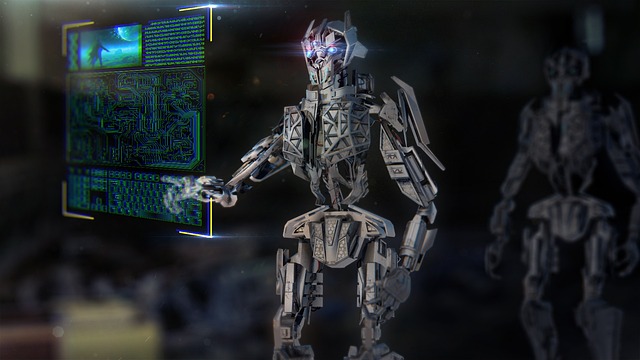
- Increased productivity: RPA eliminates the need for manual data entry and repetitive tasks, allowing employees to focus on more strategic and value-added activities.
- Enhanced accuracy: With RPA, the chances of human errors are significantly reduced, leading to improved data accuracy and quality.
- Cost savings: RPA reduces operational costs by automating processes that were previously performed manually, resulting in increased cost-efficiency.
- Process improvement: RPA enables organizations to identify bottlenecks and inefficiencies in their processes, leading to continuous improvements and optimization.
Intelligent Automation
Intelligent automation, a natural progression from robotic process automation, combines artificial intelligence and robotics to further streamline and optimize business processes. By integrating AI capabilities, intelligent automation enables machines to perform complex tasks that require intelligent decision-making and cognitive automation. This advanced technology can analyze vast amounts of data, learn from patterns, and make informed decisions autonomously. Through intelligent automation, businesses can achieve higher efficiency, accuracy, and productivity, while reducing costs and human error.
Intelligent decision-making is a key component of intelligent automation, as it allows machines to make informed choices based on data analysis and algorithms. Cognitive automation, on the other hand, refers to the ability of machines to learn and adapt to new situations, improving their performance over time.
With the combination of AI and robotics, intelligent automation offers businesses the opportunity to automate repetitive tasks and free up human resources for more strategic and creative work. It enables companies to stay competitive in today's fast-paced and data-driven market, providing them with the ability to make smarter decisions and achieve better outcomes.
Robotics Engineering
The field of robotics engineering plays a crucial role in advancing the integration of AI capabilities and automation in various industries. As the demand for intelligent machines grows, robotics engineers are responsible for designing, building, and programming robots that can perform complex tasks with precision and efficiency.
Here are some key areas that robotics engineering is currently focused on:
- Robotics Ethics: With the increasing use of robots in everyday life, there is a need to address ethical considerations. Robotics engineers are working on developing guidelines and frameworks to ensure that robots are programmed to act ethically and make decisions that align with human values.
- Robotic Prosthetics: Robotics engineering has made significant advancements in the development of robotic prosthetics that can restore mobility and functionality to individuals with limb loss. These robotic limbs can be controlled by the user's neural signals, providing a more natural and intuitive experience.
- Autonomous Navigation: Robotics engineers are continuously working on improving the navigation capabilities of robots. This involves developing algorithms and sensors that allow robots to navigate and interact with their environment autonomously, without human intervention.
- Human-Robot Collaboration: Robotics engineering aims to enhance the collaboration between humans and robots in various industries. By developing robots that can work alongside humans safely and efficiently, productivity and safety can be improved.
Through their expertise and innovation, robotics engineers are shaping the future of automation and AI integration, making significant contributions to various industries.
Robot Programming
How can effective robot programming enhance the capabilities of AI and robotics?

Robot programming plays a crucial role in enabling robots to perform complex tasks and interact with the environment. It involves designing and implementing algorithms that govern robot behavior and decision-making processes.
By incorporating principles of machine learning and artificial intelligence, robot programming allows robots to learn from their experiences and adapt their behavior accordingly. This capability enables robots to improve their performance over time and handle a wide range of tasks in different environments.
Effective robot programming also enhances the efficiency and safety of robotic systems, as robots can learn from their mistakes and avoid potential hazards.
Frequently Asked Questions
How Do Autonomous Robots Impact Job Automation and Employment Rates?
Autonomous robots have a profound impact on job automation and employment rates, leading to potential job displacement and economic consequences. As these robots become more advanced, industries must adapt to the changing landscape to ensure sustainable employment opportunities.
What Are the Ethical Considerations and Potential Risks Associated With Using Machine Vision Technology?
The use of machine vision technology raises ethical implications and privacy concerns. It is important to consider the potential risks associated with the misuse or abuse of this technology, and to implement safeguards to protect individuals' rights and privacy.
Can Robot Control Systems Be Easily Integrated With Existing Manufacturing Processes?
Integrating robot control systems with existing manufacturing processes can pose challenges due to compatibility issues and the need for reconfiguration. However, the benefits of increased efficiency, productivity, and flexibility make it an attractive proposition for businesses seeking to optimize their operations.
How Does Natural Language Processing Contribute to Improving Customer Service in Industries Like Healthcare?
Natural language processing (NLP) plays a crucial role in improving communication and enhancing the patient experience in industries like healthcare. By enabling machines to understand and interpret human language, NLP facilitates efficient and personalized interactions between patients and healthcare providers.
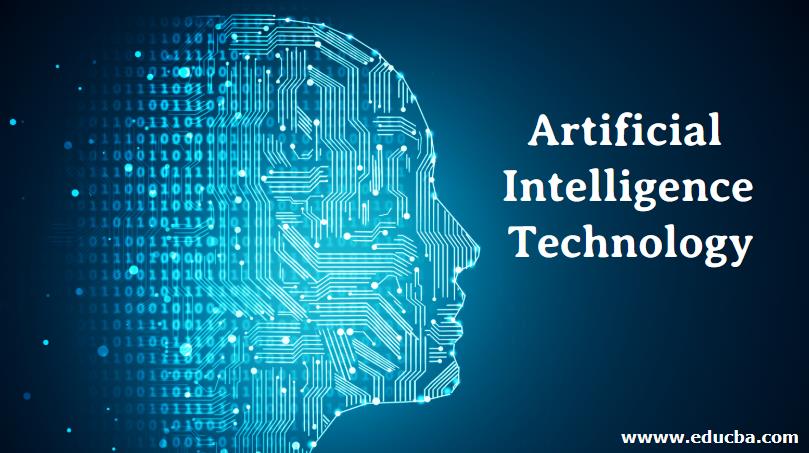
What Are the Key Challenges in Developing Effective Human-Robot Interaction Systems?
Developing effective human-robot interaction systems presents several challenges. These include designing interfaces that are intuitive, ensuring seamless communication between humans and robots, addressing privacy and security concerns, and overcoming cultural and social barriers to acceptance and adoption.
 Business & FinanceHealth & MedicineTechnologyLifestyle & CultureScience & EnvironmentWorld NewsPrivacy PolicyTerms And Conditions
Business & FinanceHealth & MedicineTechnologyLifestyle & CultureScience & EnvironmentWorld NewsPrivacy PolicyTerms And Conditions
